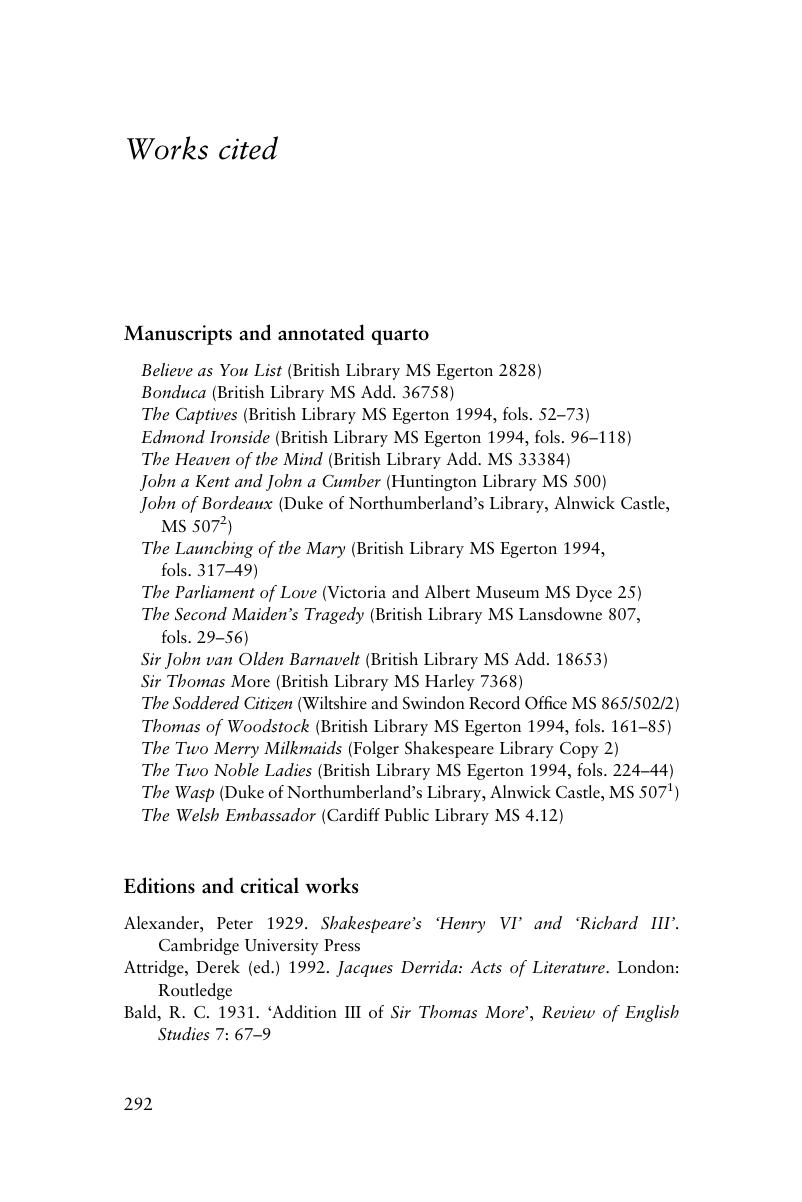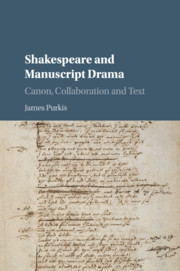Works cited
Published online by Cambridge University Press: 05 June 2016
Summary

- Type
- Chapter
- Information
- Shakespeare and Manuscript DramaCanon, Collaboration and Text, pp. 292 - 306Publisher: Cambridge University PressPrint publication year: 2016

